Do you like munching on popcorn while watching your favorite movie? Or when you are just getting bored at home? But have you ever thought, who was the first to discover such a fantastic snack? How many types of corn are there? How was it all in the beginning?
As per scientists, people from Mexico grew corn 7000 years ago. It all came from a wild grass teosinte, which looked different from the corn we have today. It was called ‘maize’ then. And Indians across South and North America depended on maize crops for food. Surpassing the boundaries of Mexico, Southern, and Northern parts of America, corn came down to the coast of Peru.
Later, when Columbus discovered America in 1492, he also found corn. But till this time, European people had no idea of the same.
Until 1800 corn was only included in the “diet of the poor.” Then came the industrial revolution, helping corn transit into an elite ingredient worthy of serving at dining tables. But how? Well, that calls for an elaborate context. But for now, let’s return to the different types of corn.
Sweet Corn
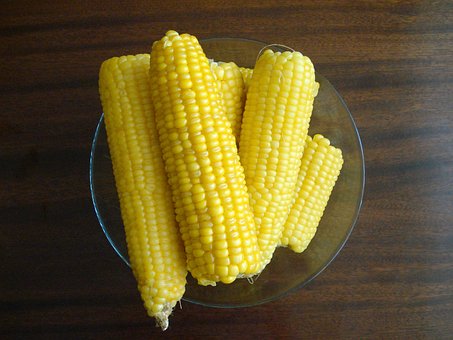
Scientific Name: Zea mays L.
Most of the garden catalogs and gardeners are familiar with this corn type. The harvesters usually pick up sweet corn at the ‘milk’ stage when tender and juicy. How do you get to know about the milk stage? Press the corn with your thumbnail and watch a milky substance release from the kernel. It takes a week to 20 days for the corn to reach this stage from the time planted.
If you have a space of 6 by 6 ft, you can quickly grow your summery treats of sweet corn. Regarding nutritional factors, it is a steady source of iron and helps monitor anemia levels. The presence of niacin and folic acids helps with the formation of blood cells. The types of sweet corn you get are Country Gentleman, Hawaiian Super Sweet, and Double Red.
Flint Corn
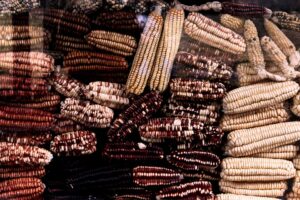
Scientific Name: Zea mays var. Indurata
Also known as Indian corn, it is more common in South and Central America. Flint corn gets a multicolored appearance, which people use to decorate food dishes. Also, this corn is rich in proteins and is used to produce breakfast cereals or animal feeds.
As the oldest and the most diverse corn type, Flint corn is characterized by a complex starch (thick layer) surrounding the kernel. Moreover, it packs a lot of flavors and can be used in preparations like hominy, masa, and grits.
Field Corn
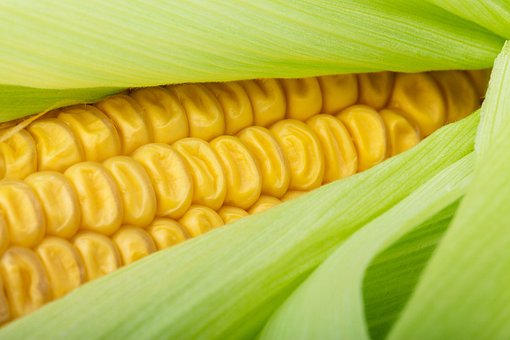
Scientific Name: Zea mays var. Indentata
It is also known as dent corn because of the indentation at the top of the corn kernel on drying up. Field corn makes up most commercially raised corn worldwide and forms an active ingredient in food products like chips, tortillas, corn gluten meal, and livestock feed.
Among the various types of corn, field corn has a high starch content and can be grounded into corn meal when they are harvested dry. Looking at its area-specific use. This corn type is used to make elotes in Mexico.
Pop Corn
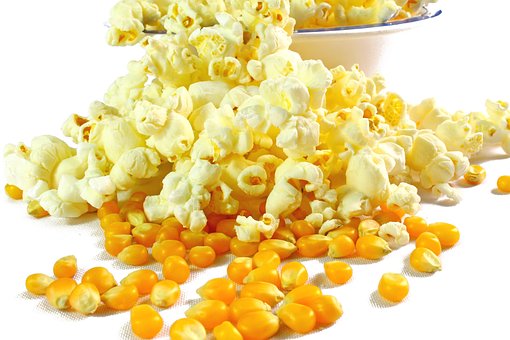
Scientific Name: Zea mays everta
Have you ever thought, “What type of corn is used for popcorn?” Now, popcorn is an exclusive corn type and the oldest to be domesticated. On heating Popcorn, the moisture stored in the kernels turns into steam, exploding the starch inside. Thus turning the kernel outside. That is how you get your favorite snack.
Popcorns tend to be immensely chewy when plucked off at the milk stage. It is best to harvest when fully mature. The popcorn kernels are used to make corn flour. Also, moving on, there are various popcorn types: Japanese Hulless, Ladyfinger, Butterfly style, etc.
Flour Corn
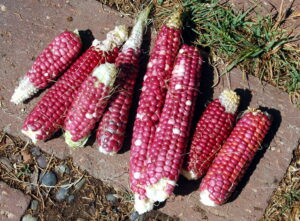
Scientific Name: Zea mays var. amylacea
Flour corn has a soft starch, which you can easily turn into a nice cornmeal. These corn types can grow from 2 ft to 10 ft tall, leaving people to state “corn is a type of grass.” What do you think? Moving on, flour corns are slender and long. You can harvest them at the milk stage.
Most flour corn varieties originated in the southwestern parts of the United States. Considering the taste, it has a subtle outlook, unlike other types of corn, especially flint corn. Some Flour corn varieties are Seneca White, Hopi Blue, and Apache Red.
Waxy Corn

Scientific Name: Zea mays var. Ceratina
Waxy corn comes with 100% amylopectin starch, which is molecularly branched. In 1908, the waxy ‘wx’ mutant was discovered in China. Moving to 1936, researchers from Lowa State University noticed its unique properties and started working on hybrids.
This corn is flavorless but offers a massive boost in energy levels among athletes. Also, waxy corn is known for enhancing the speed at which the body breaks down fat stores. In case of accidents, athletes or sportspersons must have waxy corns to speed up their recovery rates.
So that is all about the types of corn. Now, you can understand what a simple snacking ingredient is capable of.
What are you waiting for? Include one in your diet among the various types of corn listed here today, as applicable, and mix them with some vegetables for a tasty treat.



